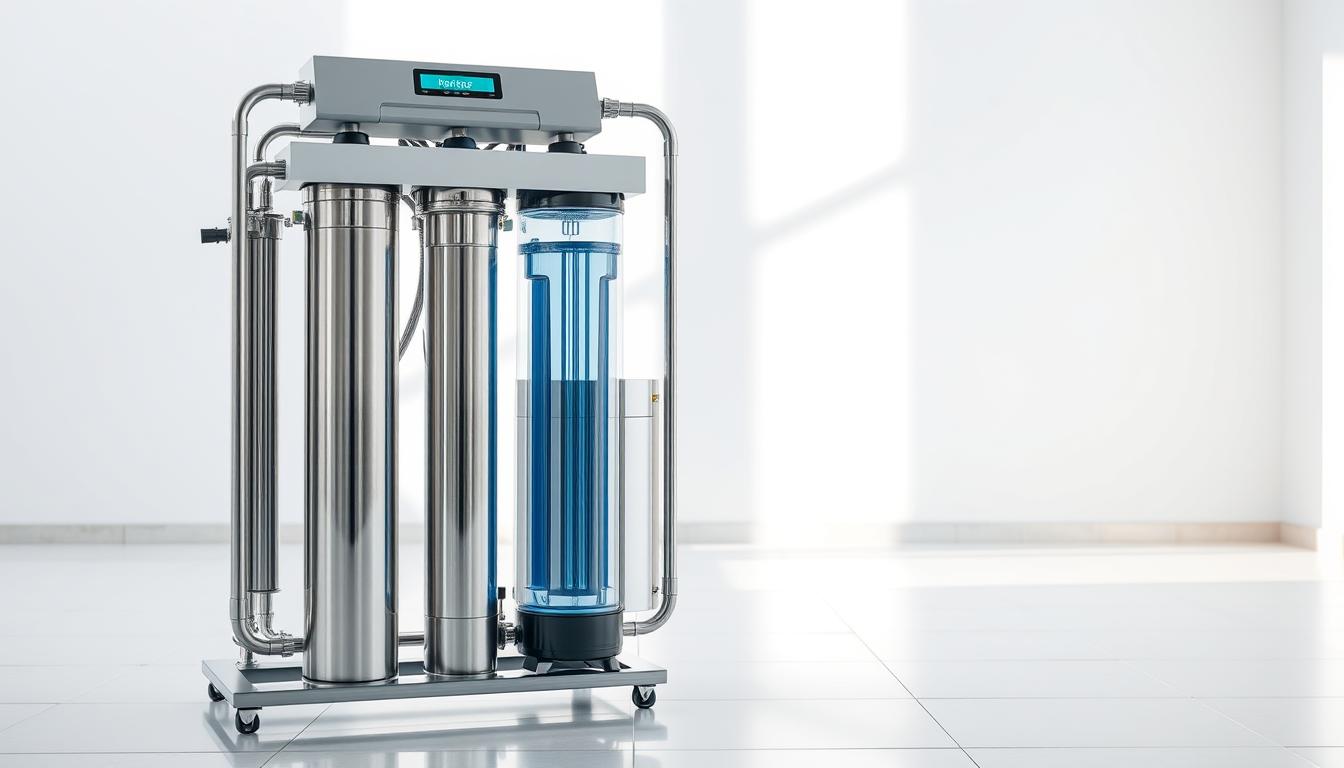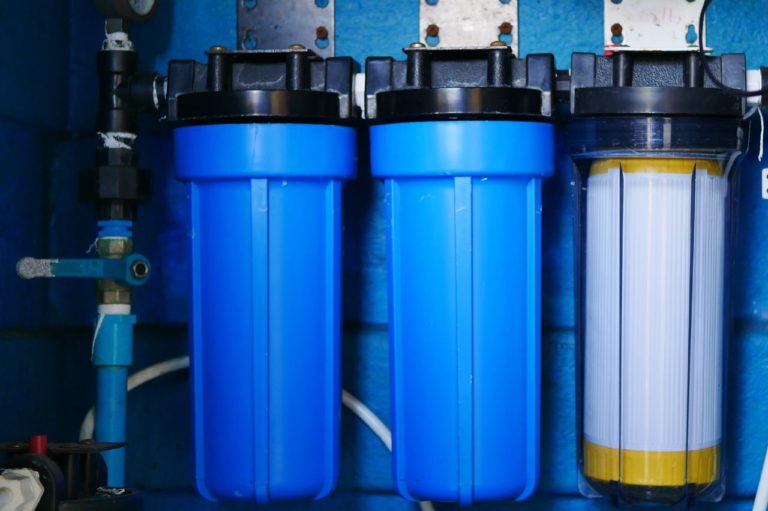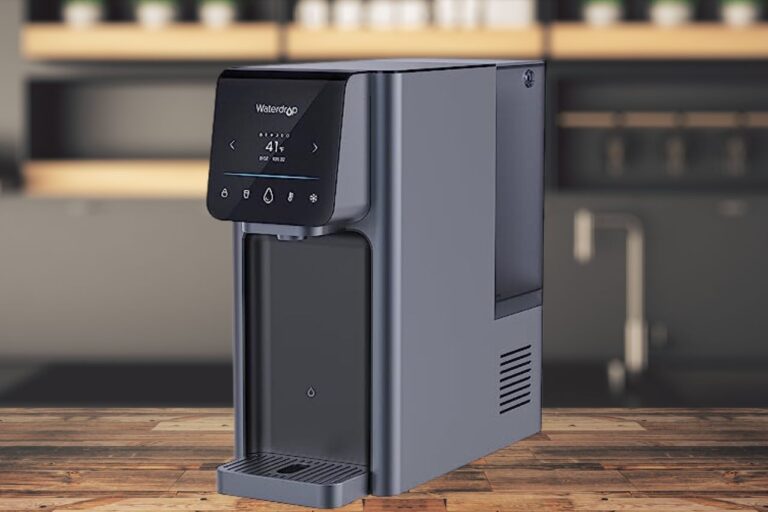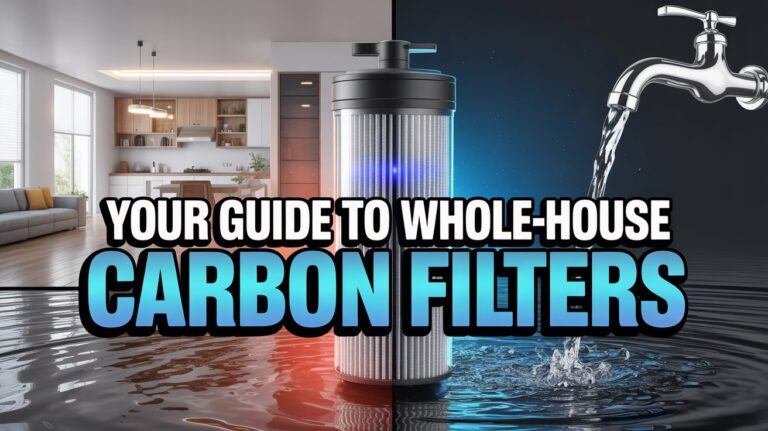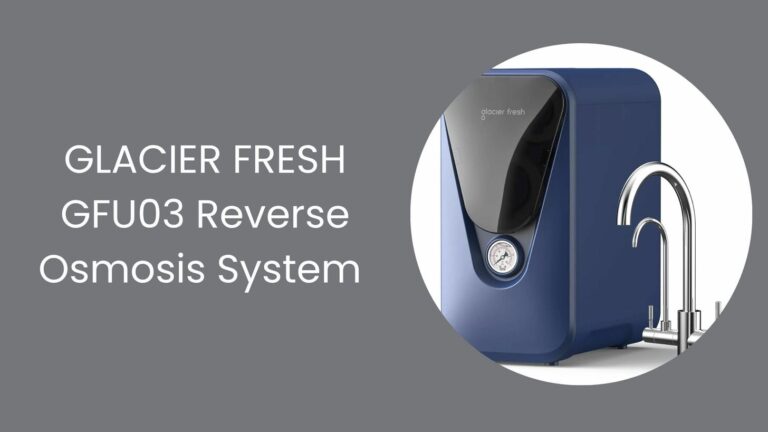Do You Need a Reverse Osmosis System with a Water Softener?
Nearly 1 in 5 households in the United States have contaminated drinking water, making water treatment systems a necessity. With numerous options available, choosing the right system can be overwhelming.
When it comes to ensuring clean drinking water, two popular solutions are often considered: reverse osmosis systems and water softeners. While both are designed to improve water quality, they serve different purposes and are suited for different needs.
Understanding whether you need a reverse osmosis system in addition to a water softener requires a closer look at what each system does and how they can work together to provide the cleanest drinking water possible.
Key Takeaways
- Reverse osmosis systems and water softeners serve different purposes in water treatment.
- A reverse osmosis system is designed to remove a wide array of contaminants from drinking water.
- Water softeners are primarily used to remove minerals that cause water to be hard.
- Using both systems can provide comprehensive water treatment.
- The decision to use a reverse osmosis system with a water softener depends on your specific water quality needs.
Understanding Water Quality Challenges in American Homes
American homes face a myriad of water quality challenges that can impact health, household appliances, and overall quality of life. Ensuring access to clean and safe water is a fundamental necessity, yet many households struggle with various water contaminants.
Common Water Contaminants and Their Sources
Water contaminants can come from a variety of sources, including natural occurrences, agricultural runoff, and aging infrastructure. Common contaminants include chlorine, lead, arsenic, and bacteria, which can enter the water supply through different means. For instance, lead often leaches into water from older pipes, while arsenic can be naturally present in groundwater.
Health and Household Impacts of Poor Water Quality
Poor water quality can have significant health implications, ranging from gastrointestinal issues to more serious conditions like cancer, depending on the contaminants present. Moreover, hard water or water with high levels of certain minerals can lead to scaling in pipes and appliances, reducing their efficiency and lifespan. As noted by experts, “The quality of your water can directly affect the longevity of your plumbing and appliances.”
“Clean water is a basic human right, and it’s crucial that we protect it.”
The Importance of Comprehensive Water Treatment
Given the potential health and household impacts, comprehensive water treatment is essential. This involves not just addressing the symptoms (like hardness or certain contaminants) but also ensuring that the water is thoroughly treated to remove a broad spectrum of contaminants. Combining water softening with reverse osmosis can provide a robust solution, offering both softened water and comprehensive contaminant removal.
By understanding the challenges and implementing effective water treatment solutions, homeowners can safeguard their health, protect their homes, and enjoy better-tasting water.
What is a Water Softener and How Does It Work?
Understanding how a water softener works is crucial for those looking to mitigate the problems associated with hard water. A water softener is a device that uses ion exchange technology to remove calcium and magnesium ions from water, replacing them with sodium or potassium ions. This process makes the water “softer,” reducing its ability to cause scaling in pipes and appliances.
The Science Behind Ion Exchange Softening
The ion exchange process involves resin beads that attract and hold onto calcium and magnesium ions, exchanging them for sodium or potassium ions. This process continues until the resin is saturated, at which point it needs to be regenerated, typically with a salt-based solution.
Types of Water Softeners Available
There are primarily two types of water softeners: salt-based and salt-free. Salt-based softeners use the ion exchange process, while salt-free systems condition water without removing minerals, often using template-induced crystallization or other technologies.
What Water Softeners Remove (and What They Don’t)
Water softeners are designed to remove calcium and magnesium ions, which cause water hardness. However, they do not remove other contaminants such as lead, chlorine, or certain bacteria. For comprehensive water treatment, additional filtration systems may be necessary.
What is Reverse Osmosis and How Does It Function?
The reverse osmosis process is a sophisticated method of water filtration that uses a semipermeable membrane to remove impurities. This technology has become increasingly popular for its effectiveness in purifying water for drinking and other household uses.
The Reverse Osmosis Filtration Process Explained
Reverse osmosis (RO) works by applying pressure to force water through a semipermeable membrane, which has tiny pores that block contaminants. This process removes a wide range of impurities, including dissolved solids, bacteria, viruses, and other harmful substances. The result is clean and safe drinking water.
Components of a Residential RO System
A typical residential RO system consists of several key components:
- Pre-filters to remove larger particles and protect the membrane
- A semipermeable membrane for the RO process
- Post-filters to improve taste and remove any remaining impurities
- A storage tank to hold the filtered water
- A faucet or dispenser for accessing the purified water
Contaminants Removed by Reverse Osmosis
Reverse osmosis is highly effective at removing various contaminants, including:
| Contaminant | Description | Removal Efficiency |
|---|---|---|
| Dissolved Solids | Minerals and salts dissolved in water | Up to 99% |
| Bacteria and Viruses | Microorganisms that can cause illness | Up to 99.99% |
| Heavy Metals | Toxic metals like lead and mercury | Up to 99% |
As National Sanitation Foundation notes, “Reverse osmosis is one of the most effective methods for removing a wide range of contaminants from drinking water.”
Key Differences Between Water Softeners and Reverse Osmosis Systems
The primary difference between water softeners and reverse osmosis systems lies in their filtration capabilities and applications. Water softeners are designed to remove minerals that cause water to be hard, primarily calcium and magnesium, through a process known as ion exchange.
Comparing Filtration Capabilities
Water softeners excel at removing minerals that cause scaling, but they don’t remove other contaminants like bacteria, viruses, or dissolved solids. On the other hand, reverse osmosis (RO) systems use a semipermeable membrane to remove a wide array of contaminants, including dissolved solids, bacteria, and viruses, resulting in very pure water.
Point-of-Entry vs. Point-of-Use Applications
Water softeners are typically installed at the point of entry (POE), treating all the water in a household. In contrast, RO systems are often used at the point of use (POU), such as under the sink, to provide purified water for drinking and cooking.
Water Quality Results from Each System
| System | Primary Function | Water Quality Outcome |
|---|---|---|
| Water Softener | Removes calcium and magnesium | Reduces scaling; softer water |
| Reverse Osmosis | Removes dissolved solids, bacteria, viruses | Highly purified water; reduced TDS |
Understanding these differences is crucial for homeowners to decide which system, or both, they need to achieve their desired water quality.
Do You Need a Reverse Osmosis System with a Water Softener?
Understanding the specific water quality issues in your home is crucial to deciding whether you need one or both of these systems. Water quality can vary significantly from one location to another, and different contaminants may require different treatment approaches.
When One System Isn’t Sufficient
In many cases, a single water treatment system may not be enough to address all the water quality issues in a household. For instance, a water softener can remove hardness minerals, but it may not address other contaminants like lead, chlorine, or nitrates.
Using both a water softener and a reverse osmosis system can provide comprehensive protection against a wide range of water contaminants, ensuring safer drinking water and better overall water quality.
How the Two Systems Complement Each Other
A water softener is designed to remove calcium and magnesium ions, which cause water hardness, while a reverse osmosis system uses a semipermeable membrane to filter out a broader range of contaminants, including dissolved solids, bacteria, and viruses.
Together, they can provide a comprehensive water treatment solution that addresses both the aesthetic issues (like hardness and taste) and health-related concerns.
Using Water Testing to Determine Your Needs
The most effective way to determine whether you need both systems is through water testing. By analyzing your water quality, you can identify the specific contaminants present and decide on the most appropriate treatment strategy.
| Water Quality Issue | Water Softener | Reverse Osmosis |
|---|---|---|
| Hardness Minerals | Effective | Partially Effective |
| Dissolved Solids | Not Effective | Effective |
| Bacteria and Viruses | Not Effective | Effective |
By understanding your water quality and the capabilities of different treatment systems, you can make an informed decision about whether to install one or both systems.
Benefits of Using Both Systems Together
The benefits of installing both a water softener and a reverse osmosis system are numerous and impactful. By combining these two systems, homeowners can enjoy comprehensive water treatment that addresses a wide range of water quality issues.
Comprehensive Contaminant Removal
One of the primary advantages of using both systems is the ability to remove a broad spectrum of contaminants. Water softeners are effective at removing minerals that cause water hardness, such as calcium and magnesium, while reverse osmosis systems can remove dissolved solids, bacteria, viruses, and other impurities that softeners might miss.
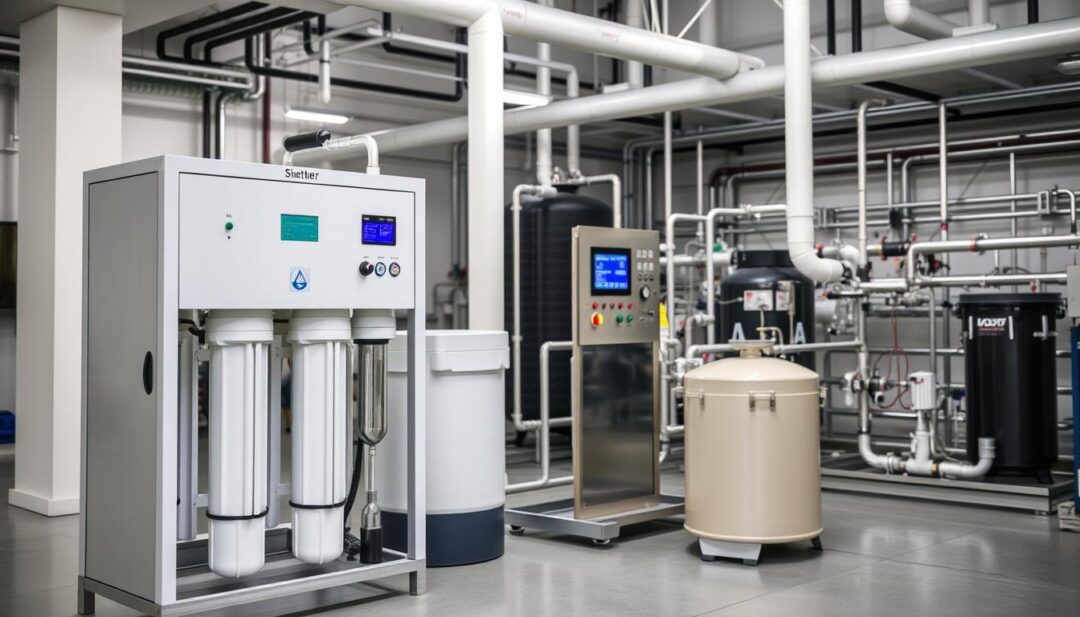
Extended Equipment and Appliance Lifespan
Using both systems together can also help extend the lifespan of household appliances and plumbing. By removing hardness minerals and other contaminants, you can reduce the risk of scale buildup and corrosion, which can damage appliances like water heaters, dishwashers, and coffee makers.
Improved Water Taste, Clarity, and Safety
Another significant benefit is the improvement in water taste, clarity, and overall safety. Reverse osmosis systems can remove impurities that affect the taste and odor of water, while water softeners can make water feel smoother and cleaner. Together, they provide water that is not only safer but also more pleasant to drink.
By integrating both systems, homeowners can enjoy the dual benefits of improved water quality and appliance protection, making it a worthwhile investment for those seeking comprehensive water treatment solutions.
Reverse Osmosis Water Softener Combo Systems
For homeowners seeking a comprehensive water treatment solution, reverse osmosis water softener combo systems offer a convenient and integrated approach. These systems combine the benefits of both water softening and reverse osmosis filtration, providing a holistic solution to various water quality issues.
All-in-One System Options
Combo systems are designed to simplify water treatment by integrating multiple processes into a single unit. This can include water softening to remove calcium and magnesium ions, and reverse osmosis filtration to eliminate a wide range of contaminants, from dissolved solids to microorganisms.
These all-in-one systems are particularly appealing to homeowners who want to minimize the complexity and space requirements of separate water treatment systems.
Advantages of Integrated Systems
One of the primary advantages of combo systems is their convenience. By integrating water softening and RO filtration, homeowners can enjoy:
- Simplified maintenance, as there’s only one system to service
- Reduced space requirements, as the combo system occupies less room than separate units
- Comprehensive water treatment, addressing both hardness and a wide range of contaminants
Limitations of Combo Units
While combo systems offer several benefits, they also have some limitations. For instance:
- Performance: The combined system’s performance might be compromised if not properly maintained or if the water quality is particularly poor.
- Maintenance: Although maintenance is simplified, the frequency and complexity can increase if the system is not designed with serviceability in mind.
In conclusion, reverse osmosis water softener combo systems represent a significant advancement in water treatment technology, offering homeowners a convenient and effective way to address multiple water quality issues. However, it’s crucial to weigh the advantages against the potential limitations to determine if a combo system is the right choice for your specific needs.
Installation Considerations for Dual Water Treatment Systems
To maximize the benefits of a dual water treatment system, proper installation is paramount. This involves careful consideration of several key factors to ensure the system operates efficiently and effectively.
Proper System Configuration and Sequence
The configuration and sequence of a dual water treatment system are critical to its performance. Typically, the water softener should be installed before the reverse osmosis (RO) system to prevent scale buildup in the RO membranes. This sequence ensures that the RO system can operate at its optimal level, removing contaminants and improving water taste and clarity.
- Install the water softener first to remove hardness minerals.
- Follow with the RO system to remove dissolved solids and other contaminants.
Space and Plumbing Requirements
Dual water treatment systems require adequate space for both the water softener and the RO system, as well as the necessary plumbing connections. It’s essential to assess the available space and plan the installation accordingly.
Key considerations include:
- Ensuring sufficient space under the sink or in the designated area.
- Planning for the required plumbing connections and potential additional components like a dedicated faucet for RO water.
Professional vs. DIY Installation Approaches
While DIY installation is possible, professional installation is often recommended for dual water treatment systems. Professionals can ensure that the system is configured correctly, installed properly, and functioning as intended.
“Professional installation can provide peace of mind and ensure that your dual water treatment system operates at peak performance from the start.”
In conclusion, the installation of a dual water treatment system requires careful planning and consideration of several factors, including system configuration, space, and plumbing requirements. Whether opting for professional or DIY installation, understanding these key considerations is crucial for maximizing the system’s benefits.
Cost Analysis: Investment vs. Long-Term Benefits
While the upfront costs of water treatment systems may seem daunting, it’s essential to consider the potential long-term savings and benefits. Investing in both a water softener and a reverse osmosis system can significantly impact your household budget, but understanding the total cost of ownership is crucial for making an informed decision.
Initial Expenses
The initial purchase and installation expenses for water softeners and reverse osmosis systems can vary widely depending on the system’s capacity, features, and installation complexity. On average, a water softener can cost between $500 to $2,000, while a reverse osmosis system can range from $200 to $600. Installation costs can add another $200 to $500 to the total bill, depending on whether you choose a DIY installation or hire a professional.
Ongoing Costs
Ongoing maintenance and operational costs are also significant factors in the total cost of ownership. Water softeners require regular salt replenishment, which can cost around $50 to $100 per year, depending on usage. Reverse osmosis systems need periodic filter replacements, costing between $50 to $150 annually. Additionally, reverse osmosis systems can increase water waste, potentially leading to higher water bills.
Return on Investment
Despite these costs, the return on investment can be substantial. By protecting your appliances from scale buildup and providing clean drinking water, these systems can extend the lifespan of your household appliances, potentially saving you hundreds or even thousands of dollars in repair and replacement costs over time. As water treatment experts emphasize, the long-term benefits often outweigh the initial and ongoing expenses.
“Investing in water treatment is not just about improving water quality; it’s about protecting your home and your wallet in the long run,” says a leading industry expert. This perspective underscores the importance of considering both the immediate costs and the long-term advantages when evaluating water treatment options.
Maintenance Requirements for Combined Systems
To ensure your water treatment system operates efficiently, regular maintenance is key. Both water softeners and reverse osmosis (RO) systems require periodic upkeep to function optimally.
Water Softener Maintenance Schedule
Water softeners need regular salt refills, typically every 1-3 months, depending on usage and system capacity. It’s also essential to clean the brine tank every 6-12 months to prevent salt bridges from forming.
| Maintenance Task | Frequency |
|---|---|
| Salt Refill | Every 1-3 months |
| Brine Tank Cleaning | Every 6-12 months |
RO System Filter Replacement Timeline
RO systems require filter replacements every 6-12 months. The frequency depends on water quality and usage.
Troubleshooting Common Issues
Common issues with combined systems include low water pressure, salt bridges in the brine tank, and filter clogging. Regularly checking system components and performing maintenance tasks can help prevent these problems.
Environmental Considerations of Dual Water Treatment
While dual water treatment systems offer comprehensive water quality solutions, their ecological effects cannot be overlooked. As homeowners invest in these systems for cleaner and safer water, it’s essential to consider their environmental footprint.
Water Usage and Waste Concerns
One of the primary environmental concerns with dual water treatment systems, especially reverse osmosis (RO) systems, is water waste. RO systems can reject a significant amount of water during the filtration process. However, advancements in technology have led to more efficient systems that reduce waste. Homeowners can also consider water recycling options for the rejected water, such as using it for gardening or other non-potable purposes.
Salt Discharge from Water Softeners
Water softeners discharge salt during the regeneration process, which can impact soil and water quality if not properly managed. To mitigate this, some modern water softeners use potassium chloride instead of sodium chloride, or they employ salt-free technologies. Regular maintenance and proper setup can also minimize environmental impact.
Energy Consumption and Sustainable Alternatives
Both water softeners and RO systems consume energy, contributing to their overall environmental footprint. Looking into sustainable alternatives, such as solar-powered systems or energy-efficient models, can help reduce this impact. Additionally, choosing systems with low-energy operation can further mitigate their ecological effects.
By understanding and addressing these environmental considerations, homeowners can make more informed decisions about their water treatment solutions, balancing water quality needs with ecological responsibility.
Conclusion
In this article, we’ve explored the importance of comprehensive water treatment in American homes, discussing the roles of water softeners and reverse osmosis (RO) systems. As a summary of key points, we’ve seen that water softeners address hardness issues, while RO systems provide a deeper level of contaminant removal.
Using both systems together offers numerous benefits, including improved water taste, clarity, and safety, as well as extended equipment and appliance lifespan. When deciding on a water treatment solution, it’s essential to consider factors such as water quality, system configuration, and maintenance requirements.
By understanding the strengths and limitations of each system, homeowners can make an informed decision that meets their specific needs. As we reach this conclusion, it’s clear that a well-designed water treatment system can significantly enhance the quality of life for households.
Frequently Asked Questions
Do I need a reverse osmosis system if I already have a water softener?
What are the benefits of using a reverse osmosis water softener combo?
Can I install a dual water treatment system myself?
How often do I need to maintain a combined water softener and RO system?
Are there any environmental concerns with using a dual water treatment system?
How do I determine if I need a reverse osmosis system with a water softener?
What is the cost of purchasing and maintaining a dual water treatment system?
Do I need a reverse osmosis system if I already have a water softener?
What are the benefits of using a reverse osmosis water softener combo?
Can I install a dual water treatment system myself?
How often do I need to maintain a combined water softener and RO system?
Are there any environmental concerns with using a dual water treatment system?
How do I determine if I need a reverse osmosis system with a water softener?
What is the cost of purchasing and maintaining a dual water treatment system?
Frequently Asked Questions
Do I need a reverse osmosis system if I already have a water softener?
It depends on your water quality needs. A water softener removes minerals that cause hardness, but it may not remove other contaminants like chlorine, lead, or bacteria. If you’re concerned about these contaminants, a reverse osmosis system can provide additional filtration.
What are the benefits of using a reverse osmosis water softener combo?
A combo system can provide comprehensive contaminant removal, improve water taste and clarity, and protect appliances from damage caused by hard water and contaminants.
Can I install a dual water treatment system myself?
While it’s possible to install a dual system yourself, it’s recommended to hire a professional to ensure proper configuration, plumbing, and installation to avoid potential issues and warranty voidance.
How often do I need to maintain a combined water softener and RO system?
Maintenance schedules vary depending on the system and usage. Typically, you’ll need to replace the RO filters every 6-12 months, regenerate the water softener resin every 3-6 months, and perform other tasks as recommended by the manufacturer.
Are there any environmental concerns with using a dual water treatment system?
Yes, dual systems can generate wastewater, consume energy, and discharge salt from the water softener. However, some systems are designed to be more efficient and environmentally friendly. Look for systems with features like water-saving modes or salt-reducing technologies.
How do I determine if I need a reverse osmosis system with a water softener?
Water testing can help determine your specific needs. If your water contains contaminants like lead, chlorine, or bacteria, a reverse osmosis system may be necessary in addition to a water softener.
What is the cost of purchasing and maintaining a dual water treatment system?
The cost varies depending on the system, installation, and maintenance needs. On average, a dual system can cost between
FAQ
Do I need a reverse osmosis system if I already have a water softener?
It depends on your water quality needs. A water softener removes minerals that cause hardness, but it may not remove other contaminants like chlorine, lead, or bacteria. If you’re concerned about these contaminants, a reverse osmosis system can provide additional filtration.
What are the benefits of using a reverse osmosis water softener combo?
A combo system can provide comprehensive contaminant removal, improve water taste and clarity, and protect appliances from damage caused by hard water and contaminants.
Can I install a dual water treatment system myself?
While it’s possible to install a dual system yourself, it’s recommended to hire a professional to ensure proper configuration, plumbing, and installation to avoid potential issues and warranty voidance.
How often do I need to maintain a combined water softener and RO system?
Maintenance schedules vary depending on the system and usage. Typically, you’ll need to replace the RO filters every 6-12 months, regenerate the water softener resin every 3-6 months, and perform other tasks as recommended by the manufacturer.
Are there any environmental concerns with using a dual water treatment system?
Yes, dual systems can generate wastewater, consume energy, and discharge salt from the water softener. However, some systems are designed to be more efficient and environmentally friendly. Look for systems with features like water-saving modes or salt-reducing technologies.
How do I determine if I need a reverse osmosis system with a water softener?
Water testing can help determine your specific needs. If your water contains contaminants like lead, chlorine, or bacteria, a reverse osmosis system may be necessary in addition to a water softener.
What is the cost of purchasing and maintaining a dual water treatment system?
The cost varies depending on the system, installation, and maintenance needs. On average, a dual system can cost between $1,000 to $3,000 or more, with ongoing maintenance costs for filters, salt, and energy.
Can a reverse osmosis system remove minerals that cause water hardness?
Yes, a reverse osmosis system can remove minerals that cause water hardness, but it may not be as effective as a dedicated water softener. Some RO systems may also remineralize the water to improve taste and quality.
Are there any combo systems that integrate water softening and reverse osmosis?
Yes, there are all-in-one systems available that combine water softening and reverse osmosis. These systems can be convenient and space-saving, but may have limitations in terms of customization and performance.
,000 to ,000 or more, with ongoing maintenance costs for filters, salt, and energy.
Can a reverse osmosis system remove minerals that cause water hardness?
Yes, a reverse osmosis system can remove minerals that cause water hardness, but it may not be as effective as a dedicated water softener. Some RO systems may also remineralize the water to improve taste and quality.
Are there any combo systems that integrate water softening and reverse osmosis?
Yes, there are all-in-one systems available that combine water softening and reverse osmosis. These systems can be convenient and space-saving, but may have limitations in terms of customization and performance.

